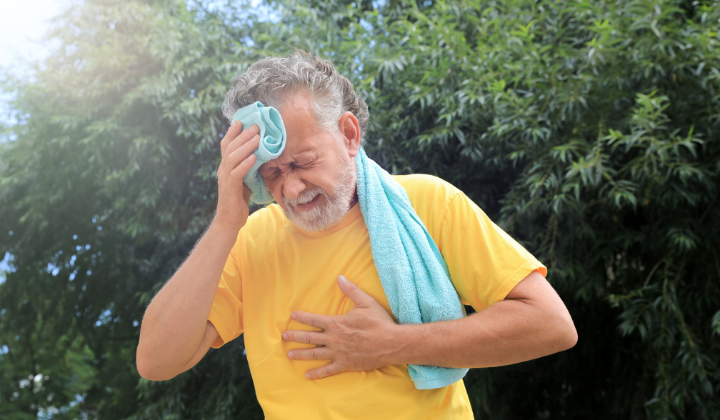
– Manuscript –
The American Southwest is experiencing extremely high temperatures and that has health officials concerned.
Along the U.S.-Mexico border, federal agents reported 10 deaths in early July. Another 45 people had to be rescued from the heat.
The city of Phoenix, Arizona may be on its way to breaking a record for most back-to-back days with a high temperature over 43 degrees Celsius. The current record was set in 1974. Even morning low temperatures in Phoenix are tying historic records.
Signs of heat-related sickness
Health officials are advising people to limit how much time they spend outdoors and to know the warning signs of heat sickness.
Common signs of heat exhaustion and heat stroke are heavy sweating and dizziness. Uncontrolled muscle movements and vomiting are also common.
Heat stroke is a serious condition that happens when the body loses its ability to control temperature. This includes losing the ability to sweat.
As a person’s body temperature reaches 39 degrees Celsius, their skin gets hot and red. Their heart rate speeds up. Their head might hurt and they may feel sick to their stomach, feel confused or even lose consciousness.
Jon Femling is an emergency medicine doctor and scientist at the University of New Mexico. He told the Associated Press that the body tries to cool itself by pumping blood to the skin. Also, as a person breathes heavily, they lose fluids and become dehydrated. A lot of sweating also leads to the loss of important nutrients, such as sodium and potassium.
Femling said that, at first, the muscles feel tired. Then organs like the kidneys, spleen and liver can start to become damaged and stop working. At the most severe level, the brain becomes affected.
Experts say it is important for people to be able to recognize when others may be suffering from heat stroke. That is because people suffering from the condition might not realize they are in danger. Confusion could influence their thinking.
If heat stroke is suspected, call 911 for emergency services. Try to lower the person’s body temperature with a cool, wet cloth or a cool bath.
Older people, children and those with health conditions face greater risk from high temperatures. High heat puts extra pressure on the cardiovascular system. The cardiovascular system includes the heart and blood vessels.
During extreme heat, experts urge people to stay indoors and to seek air-conditioned buildings. They also suggest drinking more water than usual, avoiding caffeine and alcohol, and eating lighter meals.
Learning limits
Researchers at Arizona State University (ASU) are trying to better understand the effects of extreme heat on the body. They use a special mannequin called ANDI that has about 30 sensors. It is designed to operate like a human and even to sweat.
Jenni Vanos is a professor at ASU’s School of Sustainability. She said her team is trying to understand how people deal with extreme heat.
They use ANDI and a “warm room,” where temperatures can reach 60 degrees Celsius, to study the effects of heat.
Vanos said measuring short- and long-wave radiation in the environment can tell researchers how much a surface will heat up during the day. She added that means finding shade is a very important part of reducing the effects of heat on the human body.
Summer storms could ease heat
Changes in weather often ease waves of extreme heat. In South Asia, the monsoon winds bring rain. But in the American Southwest, the El Niño weather event this year might prevent expected summer thunderstorms.
Sam Meltzer is a National Weather Service meteorologist. He said the coming weather will depend on winds from the Gulf of California. He added that summer storms might be delayed this year.
Words in This Story
sweat –v. to release water from the skin to cool the body
dizziness –n. a feeling of losing balance and falling
vomit –v. to involuntarily expel what is in the stomach because of a sick feeling
confused –adj. to be unable to think clearly
consciousness –n. the state of being awake and knowing what is going on around you
mannequin –n. a device that looks like a human body that is often used in experiments to observe experiments’ effects on a body
professor n. a teacher at a college or university who has certain privileges related to employment
meteorologist –n. a scientist who talks about the weather and atmospheric conditions
*This article has been edited and reprinted from VOA Learning English with permission from Voice of America (VOA) for use in English language materials.
